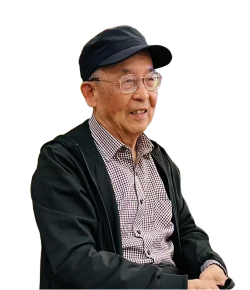At the dawn of China's reform and opening up, the question of how to establish a patent system emerged as a critical challenge. With limited reference materials and experience, China took its first steps toward building a modern patent system by adopting a dual strategy of "going out" and "bringing in." Over the years, the Patent Law of the People's Republic of China has undergone several revisions, continuously shaping a patent system with distinct Chinese characteristics. This system not only aligns with the country's strategic needs at different stages of development but has also gained widespread recognition from the international community. This year marks the 40th anniversary of the Patent Law's implementation. Bilingual Weekly reflects on its evolution — deeply rooted in China's unique conditions while enriched by global best practices. We invite those who have contributed to, nurtured talent for, reported on, or benefited from this system to share their stories and insights.
Preparation
The Patent Law serves as the foundation of China's patent system. Since the drafting began in 1979, China has emphasized a comprehensive comparison of patent systems from various countries, and has received support from international organizations and relevant nations and regions. Notably, during the Diplomatic Conference on the revision of the Paris Convention for the Protection of Industrial Property in 1980, members of the Patent Law drafting team held 14 in-depth discussions — spanning over 30 hours — with Dr. Arpad Bogsch, then Director General of the World Intellectual Property Organization (WIPO), and other officials. These discussions played a crucial role in aligning China's Patent Law with international standards. Thanks to the concerted efforts of all parties, China successfully promulgated a modern patent law within a short time. This law not only conformed to international practices and global development trends but also aligned with China's national conditions. The Patent Law was well received both domestically and internationally. Dr. Bogsch hailed its promulgation as a "historic achievement."
Implementation
On April 1, 1985, the day the Patent Law came into effect, the Chinese Patent Office (the predecessor of the China National Intellectual Property Administration, CNIPA) received 3,455 patent applications from both Chinese and international applicants, setting a world record for daily patent filings at the time. Over the past 40 years, the Patent Law has undergone four amendments, each aimed at strengthening alignment with international standards and enhancing the role of the patent system in supporting China's high-level opening up. The number of patent applications filed by Chinese applicants under the Patent Cooperation Treaty (PCT) surged from just 98 in 1994 to the highest in the world in 2019. In 2022, China joined the Hague Agreement Concerning the International Registration of Industrial Designs, and by 2024, Chinese applicants led the world in the number of international design applications filed through the Hague System. The deep integration of China's patent system with international intellectual property (IP) treaties not only enhances convenience for both Chinese and foreign applicants but also expands opportunities for building an open world economy and fostering global cooperation in scientific and technological innovation.
Talent
Talent cultivation has always been a priority in the development of China's patent system. As early as the 1980s, despite financial constraints, the Chinese Patent Office actively engaged in international exchanges and cooperation, sending key personnel to countries with well-established IP systems for advanced training in patent law, examination, documentation, and other fields. Since the 18th National Congress of the Communist Party of China, the country has placed greater emphasis on cultivating high-level IP talent and strengthening the development of a "4+1" talent framework spanning IP protection, utilization, public services, internationalization, and foundational research. Significant progress has been made in IP talent development. By the end of 2024, China's IP talent pool had surpassed 900,000, with a growing number of professionals, including patent examiners and agents. Meanwhile, patent training programs have become increasingly specialized and diversified, further strengthening the country's innovation ecosystem.
Cooperation
The CNIPA has established Patent Prosecution Highway (PPH) cooperation with patent examination agencies in 33 countries or regions. Additionally, it has acted as the International Searching Authority and the International Preliminary Examining Authority under the PCT for more than 10 countries. Over the past 40 years, China has engaged in fruitful cooperation in patent with WIPO and IP administrations from various countries and regions. China's patent system has always been open to the world, laying a solid foundation for integrating into the global innovation system. Today, China has joined nearly all major international IP treaties and established a new international IP cooperation framework featuring multilateral, regional, plurilateral, and bilateral collaboration in a coordinated and synergistic manner. Working together with IP system stakeholders from around the world, China is striving to ensure that more innovative achievements benefit countries globally.
Qiao Dexi
Former Director General of the CNIPA's International Cooperation Department
One of my most unforgettable experiences was witnessing and participating in the drafting and amendment of the Patent Law, as well as the implementation of China's patent system. In September 1985, as an on-site interpreter, I had the honor of witnessing a historic moment — when Mr. Huang Kunyi, then Commissioner of the Chinese Patent Office, became the first Chinese representative elected as President of the Paris Union Assembly. This milestone marked China's entry into a more open and expansive international patent landscape.
Originating from the era of reform and opening up, the Patent Law has evolved alongside it — and will continue to improve amid ongoing reforms. As both a witness and participant, I sincerely wish for an even brighter future for China's patent system!
Dang Jianwei
Deputy Dean of the Shanghai International College of Intellectual Property, Tongji University
The patent system is a key pillar of global IP governance, and its effectiveness depends on the support of international talent. After 40 years of development, China's IP talent cultivation has made a significant leap, evolving from one-way input to two-way exchange.
In 2016, Tongji University established the first joint IP Master's Program with WIPO, pioneering the creation of educational programs by international organizations in China. In 2017, the university launched the Belt and Road Master's Degree Program in IP, aimed at cultivating high-end talent for Belt and Road countries, marking a shift from "bringing in" to "going out." I am looking forward to China continuing to strengthen the collaborative talent development mechanism of "international organizations + top universities + practical institutions", and accelerating the construction of an open talent flow network.
Gu Yekai
Journalist from People's Daily
In the 1980s, China's patent system began almost from scratch, yet in just 40 years, it has achieved significant developments. Born out of reform and opening up, China's patent system has flourished alongside it. As the system has progressively improved, China has become increasingly committed to global engagement. Today, the development of China's patent system plays a vital role in advancing high-level opening up and driving Chinese modernization.
As a journalist in the IP field, I hope to continue witnessing the progress of China's patent system and, through news reporting, enhance public awareness of patents — helping foster a stronger culture of respecting originality and encouraging innovation.
Mi Yao
Vice President, Head of the Intellectual Property Department at ZTE
2025 marks the 40th anniversary of both the implementation of the Patent Law and the founding of ZTE. Over the past four decades, ZTE has evolved from technology importer to independent innovator, serving as both a witness to and beneficiary of China's growing patent system.
In the 1990s, China made significant revisions to the Patent Law to align with international standards, and ZTE filed its first patent in 1996. Entering the 21st century, China has deeply integrated into the global IP system, and ZTE has actively pursued international expansion, accelerating its global patent strategy and driving the development of high-quality patents. Looking ahead, we hope to see more Chinese enterprises thrive on the global IP stage, demonstrating the wisdom and strength of Chinese innovation.



